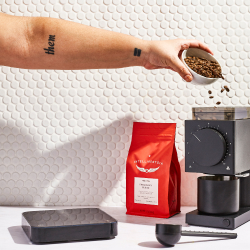There’s a magical allure to the tantalizing scent that wafts from a freshly brewed cup of coffee. That aroma, both comforting and invigorating, has a way of delicately whispering to our senses, promising a flavorful escape within the confines of a humble cup. Yet, how much do we truly understand about this symphony of scents? Welcome to our comprehensive guide: “Coffee Aroma: Unraveling the Scent-sational Secrets of Your Brew”.
In this article, we will embark on a sensory voyage into the aromatic world of coffee, a realm where science and sensory experience intertwine. From the intricacies of coffee chemistry and the influences of origin and processing to the transformative power of brewing and the art of aroma appreciation, we’ll peel back the layers of this scent-filled world that is so integral to our beloved brew.
So, whether you’re a seasoned barista, a coffee connoisseur, or a casual sipper seeking to understand what makes your morning cup so enticingly aromatic, sit back, pour yourself a coffee, and join us on this aromatic exploration. Prepare to deepen your appreciation for the delightful complexity that is the aroma of coffee.
Coffee Aroma: Key Takeaway
- The Science of Aroma: The aroma is rooted in the chemistry of the coffee bean. When coffee is roasted, a series of chemical reactions release hundreds of volatile compounds that contribute to the coffee’s distinctive aroma.
- Origins and Aromas: Different beans produce different aroma profiles. Factors like the coffee type (Arabica, Robusta, Liberica, Excelsa), the region in which the beans are grown, and the processing method all contribute to the unique aroma.
- Influence of Brew Method: The method used to brew can also greatly affect its aroma. Pressure-based methods like espresso yield concentrated, robust aromas, while immersion or pour-over brewing methods can lead to more nuanced scent profiles.
- Aroma and Flavor Perception: The aroma plays a crucial role in the perception of its flavor. The human palate is limited in taste, but our olfactory system can detect a vast range of aromas, offering a complex flavor perception that goes beyond the capabilities of our taste buds alone.
- Art of Identifying Coffee Aromas: Training our senses to identify different coffee aromas can greatly enhance our coffee-tasting experience. Tools like the Coffee Aroma Wheel can help in recognizing these aromas, and proper storage and brewing practices can help preserve these aromatic compounds.
A Dive into the Science of Coffee Aroma
The aroma of coffee is a rich tapestry of scent experiences, but have you ever wondered what’s behind this symphony of smells? The answer lies in the fascinating world of coffee chemistry.
The Chemistry Behind Coffee Aroma
Coffee chemistry is a complex field, encompassing everything from the composition of the green coffee bean to the transformations it undergoes during roasting and brewing. When it comes to the aroma, chemistry plays a pivotal role.

The enticing aroma of coffee is made up of over 800 volatile organic compounds. (1) These compounds are responsible for the distinct scents we associate with coffee. The chemical makeup of these aromatics varies depending on factors such as the type of coffee bean, its geographic origin, and the roasting process, all contributing to the rich diversity of coffee aromas.
How Roasting Influences Aroma
Coffee roasting is an art and a science, intricately linked with coffee chemistry, playing a significant role in defining coffee aroma. During the roasting process, heat causes chemical reactions within the coffee beans, transforming the simple sugars and amino acids into a myriad of complex compounds.
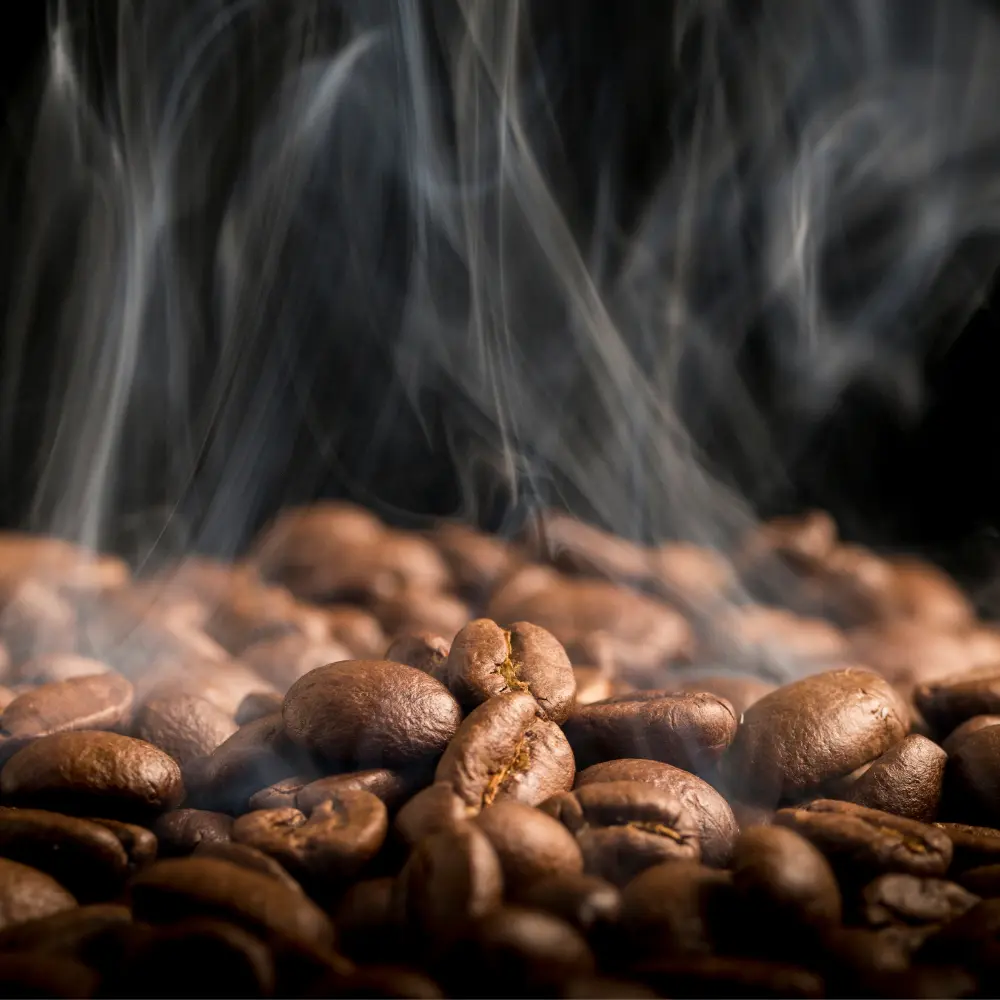
This process, known as the Maillard reaction, is responsible for creating a range of aromatic compounds that contribute to the coffee’s final aroma profile. From fruity and floral to nutty and chocolatey notes, each is a byproduct of the roasting process.
The extent and duration of roasting also impact aroma. Light roasts tend to retain more of the original bean’s character, exhibiting fruity and acidic notes. Dark roasts, on the other hand, develop caramelization, resulting in deeper, bolder aromas such as dark chocolate or toasted nuts.
Volatile Compounds: The Essence of Coffee Aroma
So, what exactly are these compounds that shape the aroma? They are a group of molecules known as volatile compounds due to their ability to vaporize and reach our olfactory system.
Key volatile compounds include acids, aldehydes, ketones, and esters. For instance, malic acids contribute to fruity notes, while methanethiol offers a fresh aroma. (2) Esters often bring about floral and fruity nuances, while ketones can either lend buttery/fruity notes or musty notes.

Coffee’s charm lies in the delicate balance and combination of these volatile compounds. A small variation can significantly impact the coffee’s aroma, subtly shifting our perception of the brew.
In essence, understanding the aroma is a deep dive into the world of coffee chemistry, exploring how compounds interact and transform, creating the captivating scent that coffee lovers across the globe cherish. This aromatic journey is just the beginning, as each cup of coffee offers a unique sensory experience to be discovered and appreciated.
Different Coffee Aromas and Their Origins
Every cup of coffee tells a story of its origin, shaped by the type of coffee bean, the local soil, the climate, and even the processing methods used. The diversity found within the coffee belt, the region between the Tropics of Cancer and Capricorn, has led to a remarkable range of aroma profiles that makes every coffee variety unique.
Common Aroma Profiles of Different Coffee Beans
Four main types of coffee beans are commonly consumed worldwide: Arabica, Robusta, Liberica, and Excelsa. Each of these carries its distinct aroma profile.
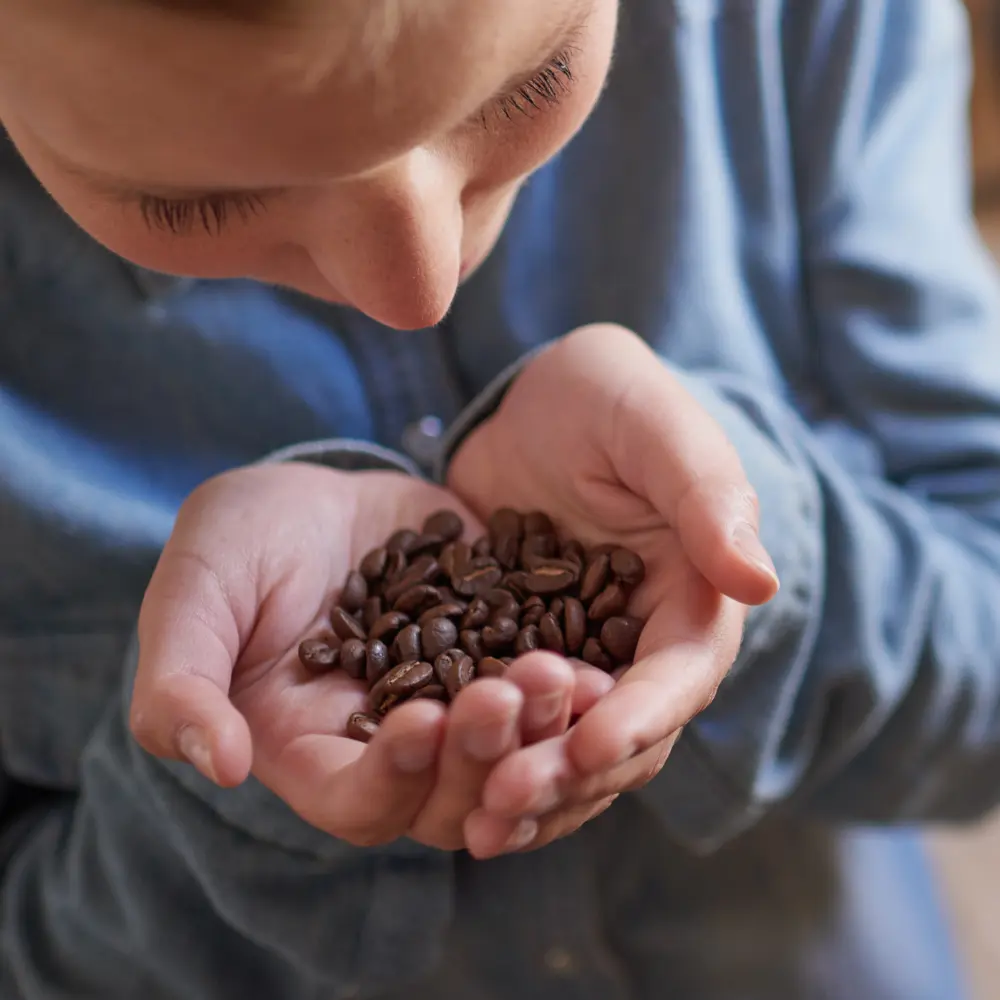
Arabica coffee beans, the most popular variety, are known for their delicate and complex aroma. They often carry notes of fruits, berries, and even a hint of wine. (3)
Robusta coffee, on the other hand, has a strong, full-bodied aroma with a noticeable earthy, grain-like undertone, often described as having hints of chocolate and nuts. (4)
Liberica coffee beans, less common but prized by coffee aficionados, carry a unique aroma profile. They’re known for their smoky, woody scent, with a hint of dark fruit and floral tones. (4)
Lastly, Excelsa coffee beans, a variant of Liberica, have a unique aroma that combines the fruity and tart notes of lighter beans with the robustness of dark roast coffee, making them a fascinating variety for aroma explorers.
The Impact of Soil and Climate on Coffee Aroma
The local environment, specifically the soil and climate, plays a significant role in defining a coffee’s aroma. This concept, known as “terroir,” is similar to how different regions produce unique wine flavors. (5)

The conditions within the coffee belt offer a prime example. Volcanic soils, for instance, tend to produce coffee with a citrusy, bright aroma, while clay soil often results in beans with a sweet, mellow aroma. The altitude at which coffee is grown can also influence aroma, with higher altitudes generally resulting in beans with more acidic, floral, and fruity aromas.
The Role of Coffee Processing in Aroma Development

Once the coffea cherries are harvested, the processing method can greatly impact the aroma. There are mainly three processing methods: washed (or wet), natural (or dry), and honey (or pulped natural or miel processing).
- Washed coffee, where the fruit pulp is entirely removed before drying, often leads to clean, bright aromas and accentuates the coffee’s inherent characteristics.
- Natural or dry-processed coffee, where cherries are dried whole, tends to result in full-bodied, complex, and fruity aromas, as the beans have more time to absorb sugars and compounds from the cherry.
- Honey-processed coffee, a hybrid method, can have a wide spectrum of aromas, from sweet and fruity to complex and bright, depending on how much mucilage (the ‘honey’) is left on the bean during drying.
In summary, the unique combination of coffee bean variety, origin, and processing leads to a wide array of possible coffee aromas, each telling its distinct story from the heart of the coffee belt to your cup.
The Influence of Coffee Aroma on Taste and Flavor Perception
The aroma of coffee is not just a prelude to your sip; it is a crucial component that greatly influences the taste and overall flavor perception. Understanding the interaction between aroma and taste can significantly elevate your drinking experience.
The Connection Between Aroma and Taste in Coffee
The aroma of coffee and its taste are deeply intertwined. Much of what we perceive as the “flavor” of coffee is indeed its aroma. Our tongues can detect basic tastes—sweet, sour, bitter, salty, and umami. However, our noses can detect a far wider range of aromas, and it’s the combination of both taste and aroma that creates the full flavor experience.
When you sip coffee, its aromatic compounds are released and travel to your nasal cavity via the back of your throat—a process known as retronasal olfaction. (6) Here, these compounds interact with your olfactory receptors, giving you a complex flavor perception that goes beyond what your taste buds alone can identify.
The Effect of Coffee Aroma on the Palate

The aroma of coffee significantly impacts our palate, affecting how we perceive its flavor and body. Certain aromas can make coffee feel richer or fuller-bodied. For instance, a coffee with a strong nutty or chocolatey aroma may come across as full-bodied, even if it’s not particularly high in acidity or bitterness.
Additionally, the aroma can also enhance specific flavors within the coffee. A coffee with a distinct fruity aroma will likely have its fruit notes more pronounced on the palate, while a coffee with floral aromas might taste lighter and more delicate.
Using Coffee Aroma for Quality Assessment
Coffee aroma isn’t just for enjoyment—it’s a vital tool in quality assessment. In professional settings, a practice known as coffee cupping is used to evaluate coffee quality systematically. During cupping, one of the key steps involves deeply sniffing the coffee (both as whole beans and as a brew) to assess its aroma profile.

The aroma of coffee can tell professionals about its origin, processing method, freshness, and potential flavor notes. For instance, a musty or overly earthy aroma might indicate that the coffee beans were improperly stored or that they’re past their peak.
By understanding the role of aroma in coffee tasting and quality assessment, you can refine your sensory skills and derive greater enjoyment from every cup. The world of coffee aromas is rich and complex, full of nuances waiting to be explored and appreciated.
Brew Methods and Their Impact on Coffee Aroma
The method used to brew coffee can significantly affect its aroma, bringing out certain notes and nuances. Each method, from pressure-based espresso to immersion brewing like the French Press, and even the traditional Turkish coffee pot method, imparts its unique influence on the aroma of your cup.
Exploring Espresso: The Effect of Pressure on Coffee Aroma
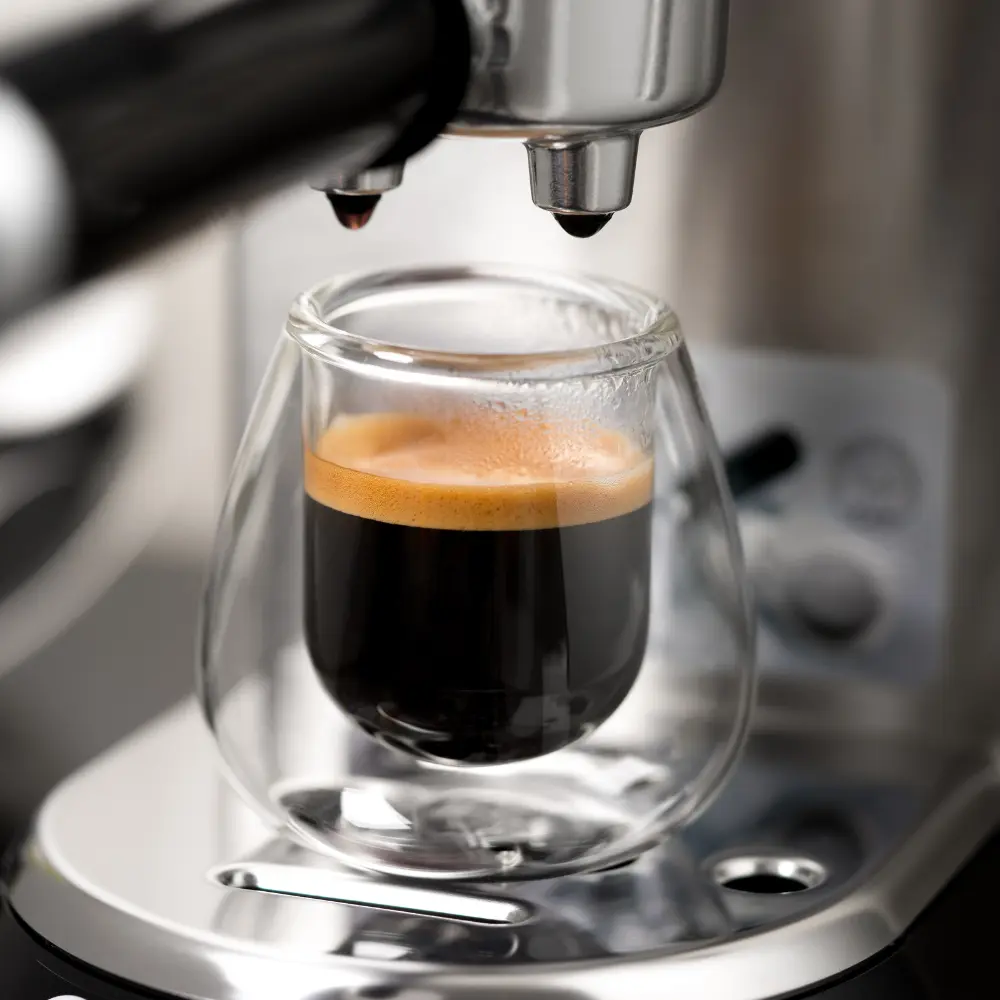
Espresso, a brewing method that forces pressurized hot water through the finely ground coffee, creates a concentrated cup of joe with a rich and robust aroma. The high pressure used in espresso machines allows for the efficient extraction of the volatile compounds responsible for coffee’s aroma. The result is an intense, layered aroma profile that you’ll notice from the moment the first drop of espresso falls from the machine.
The French Press and Immersion Brewing’s Influence on Aroma

The French Press, a classic immersion brewing method, also shapes the aroma of your brew. Here, coffee grounds are fully immersed in hot water and then separated using a metal mesh filter. This method allows more oils and fine particles into the final brew, leading to a full-bodied taste with a rich, deep aroma. The absence of a paper filter allows more of the coffee’s aromatic compounds to remain in your cup, offering a sensory experience as complex as the flavors on your palate.
Pour-Over Brewing and Its Unique Aroma Profile

Pour-over brewing methods, like the Hario V60 or the Chemex, provide a different perspective on the coffee aroma. These methods involve pouring hot water over a bed of coffee grounds housed in a paper filter. The paper filter removes many of the oils and fine particles, resulting in a cleaner cup with a distinct aroma. Pour-over coffee typically has a bright, crisp aroma profile that showcases the more delicate notes of a coffee, such as floral and fruity scents.
Turkish Coffee: Unleashing Potent Aromas from an Ancient Tradition

Turkish coffee, brewed in a special pot known as a cezve or ibrik, offers an experience that’s as much about aroma as it is about flavor. In this method, very finely ground coffee is boiled with water (and often sugar) in the Turkish coffee pot, allowing the brew to froth up and then settle, a process that’s usually repeated several times. This method yields a strong, thick coffee with a potent aroma, often accentuating deep, earthy notes. The tradition of brewing Turkish coffee provides an aroma so powerful, it’s like a time machine transporting you to bustling bazaars and quiet afternoons of the Ottoman era.
The Art of Identifying and Appreciating Coffee Aromas
Coffee tasting is an art, and just like any art, it requires practice. Recognizing and appreciating the wide array of coffee aromas enhances the entire coffee experience. So how do you train your nose, and what tools can help you identify those elusive scents?
Training Your Nose for Coffee Tasting
Training your nose to identify different aromas in coffee is a key aspect of coffee tasting or cupping. Start by paying attention to the different smells around you daily. This could be the smell of fruits as you cut them, the scent of fresh herbs, or even the aroma of baked goods straight out of the oven.

In the context of coffee, take the time to smell your beans before you brew them. Note the aromas you perceive. Then, once you’ve brewed your coffee, smell it again. Is there a difference? Can you identify any new aromas? With practice, you’ll start to pick up on various subtle scents, greatly enhancing your coffee-tasting experience.
The Coffee Aroma Wheel: A Tool for Coffee Lovers
The Aroma Wheel is an excellent tool for anyone looking to dive deeper into the world of coffee aromas. Developed by sensory scientists, this wheel categorizes the most common scents found in coffee, from the broad (like fruity or floral) to the specific (like berry or citrus). (7)
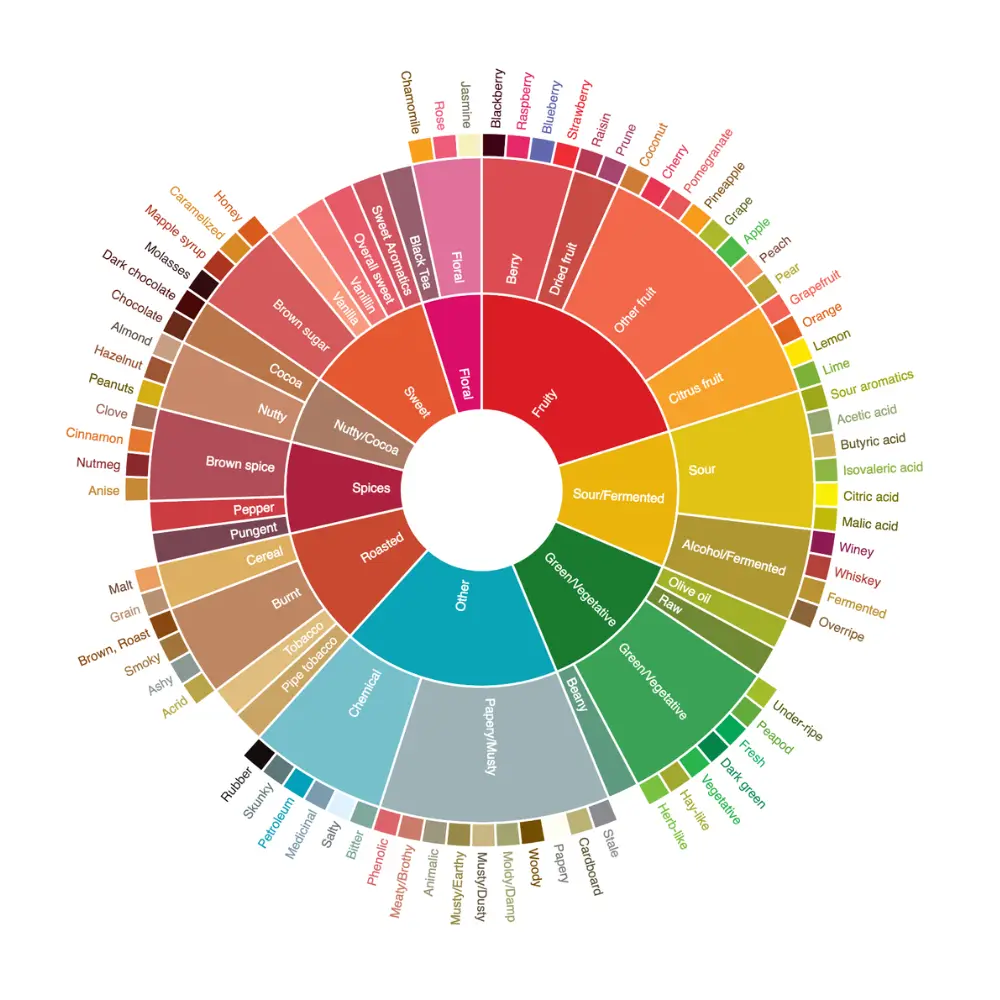
To use the wheel, start from the center and move outwards. The center features broader categories of smells, while the outer sections get more specific. This tool can be instrumental in putting a name to the various aromas you perceive during your coffee-tasting sessions.
Enhancing the Coffee Experience: Tips to Preserve Aroma
To get the most out of your coffee aromas, there are a few practical tips you can follow. First, always store your coffee beans properly — in an airtight container away from light and heat — to preserve their aromatic compounds.
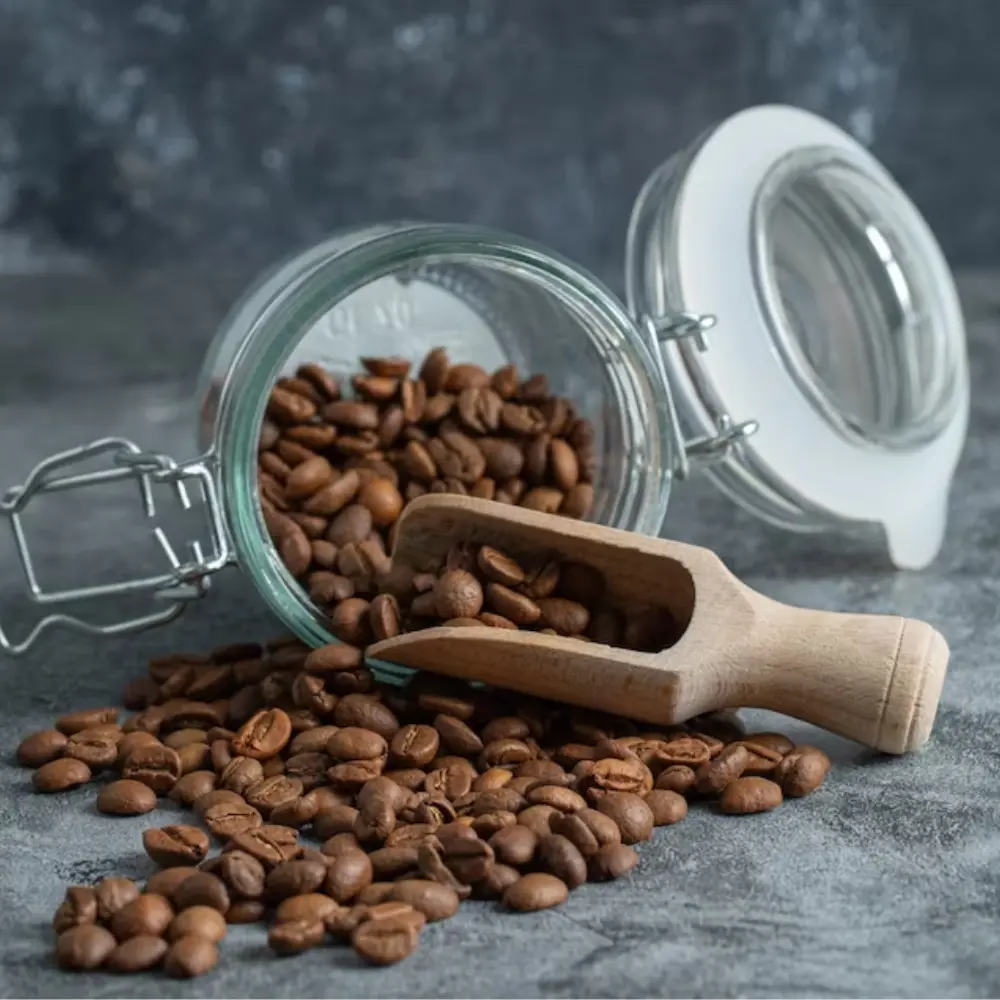
Secondly, grind your coffee just before brewing. Grounds start losing their aroma shortly after grinding, so for the most aromatic cup of coffee, it’s best to wait until you’re ready to brew.
Lastly, pay attention to the temperature. Aroma compounds are most volatile at high temperatures, which means your coffee will be most aromatic right after brewing. As you sip your cup, take a moment to appreciate the changing aroma as your coffee cools down.
With these tips and tools at your disposal, you’re well on your way to becoming a true coffee aroma connoisseur. Enjoy the journey, and remember, the world of coffee aromas is as broad and complex as it is fascinating. Each cup holds new sensory experiences waiting to be discovered.
Conclusion
In the world of coffee, the aroma is a significant factor that brings the experience of drinking this beloved beverage to life. As we’ve journeyed through the fascinating domain of coffee aromas in “Coffee Aroma: Unraveling the Scent-sational Secrets of Your Brew”, we’ve discovered how these captivating scents originate from the science behind coffee, the beans and their origins, and the brewing methods.
We’ve learned that coffee’s aroma is not just a single note, but a symphony of scents that communicate the story of the bean—from the soil it sprouted in, through its journey of processing and roasting, to the final brewing method that brought it to your cup.
Training our senses to identify these distinct aromas can unlock a new level of appreciation for coffee, making each sip a richer, more enlightening experience. By recognizing and preserving these aromatic compounds, we can truly savor the intricate orchestra of flavors that coffee has to offer.
In the end, the alluring aroma does more than just awaken our senses—it invites us into a deeper understanding and appreciation of this exquisite brew. So, the next time you hold a cup of coffee in your hands, take a moment to close your eyes, inhale deeply, and unravel the scent-sational secrets that your brew holds.
FAQ
How does the brewing method influence the aroma of coffee?
Different brewing methods extract various compounds from the coffee beans in unique ways, thus influencing the final aroma. For instance, espresso emphasizes robust, complex aromas, while pour-over methods highlight delicate notes.
How can I train my nose to identify different coffee aromas?
Start by paying attention to different smells in your daily life, and consciously smell your coffee before and after brewing. Over time, you'll start identifying various coffee aromas.
What is the coffee aroma wheel and how can it help me appreciate coffee better?
A coffee aroma wheel is a tool that categorizes different aromas, from broad categories to specific scents. It helps you identify and name the various aromas you perceive in your coffee.
How can I preserve the aroma of my coffee beans at home?
To preserve the aroma of your coffee beans, store them in an airtight container away from light, heat, and moisture, and only grind them just before brewing.
